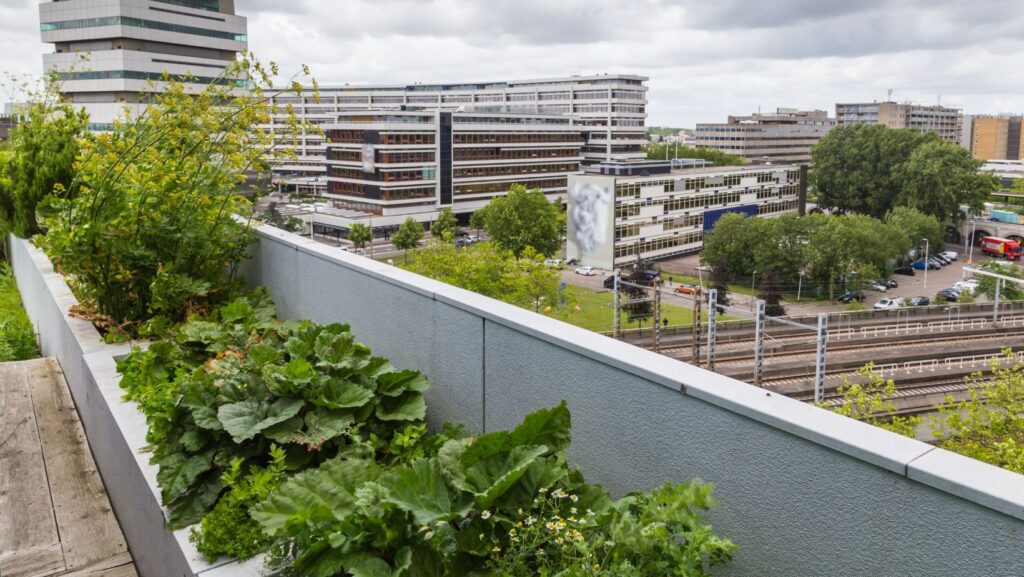Cities are becoming denser and more concrete due to rapid urbanization. It takes place anywhere in the world. Increased pollution, greater temperatures, and a decline in biodiversity are frequently the results of this growth. Sites like Tonybet Sports provide more money-making opportunities that can be invested in sustainable practices for a greener future. New approaches, such as living walls and green roofs, are becoming essential resources, nevertheless. They enhance city life and urban ecosystems. Numerous social, economic, and environmental advantages come with green infrastructures. In order to grow cities sustainably, they are needed. Benefits of Green Roofs and Living Walls
Living walls and green roofs increase biodiversity. These little urban oases provide as habitats for a variety of species. They can sustain a wide variety of plants and animals. These include pollinators like butterflies and bees. Small mammals and birds are also included in them. Nature returns to cities as a result of this rise in biodiversity. It also maintains ecological equilibrium. It aids with pollination and offers organic insect control.
Cities frequently experience the Urban Heat Island Effect and must fight it. Compared to their rural surroundings, urban environments warm far more. The extensive usage of heat-absorbing materials is the source of this. These include the common materials found in metropolitan areas: concrete and asphalt. Living walls and green roofs help lessen this impact. They use plants to cover these surfaces. Through evaporation and shadowing, the plants chill the air.
Airborne particles and contaminants are naturally filtered by plants. In densely populated cities where air quality may be subpar, this is vital. Cities benefit from living walls and green roofs because they lessen dangerous pollution. Particulate matter and nitrogen dioxide are two examples of these. City dwellers’ health and well-being are negatively impacted by this pollution.
Living walls and green roofs offer natural insulation. They aid in regulating the inside temperature of a structure.

They keep buildings cooler in the summer. As a result, less air conditioning is required. They serve as an extra layer of insulation in the winter to retain heat inside. Lower energy use lowers costs. It also lessens the carbon footprint of the city.
Challenges of Implementing Green Roofs and Living Walls
One of the main issues with living walls and green roofs is support. They require robust frameworks. The extra weight of soil, plants, and water must be supported by buildings. Before installation, structural strengthening may be needed for this.
Living walls and green roofs need upkeep. To be functional and healthy, they require it. This covers trimming, weeding, fertilizing, and watering. Over time, these chores may become costly and difficult.
The upfront expenses are substantial. These are the costs associated with installing living walls and green roofs. Materials, labor for installation, and any necessary structural alterations are all included in these expenses. Long-term savings are provided by these features thanks to their energy efficiency and other advantages. However, many property owners may find the initial outlay prohibitive.
Use of Water: Living walls and green roofs filter and chill the air. However, they require water for irrigation as well. This can be a major disadvantage in areas where water is scarce. New irrigation techniques, though, can be beneficial. Among these are greywater recycling systems. They can lessen this problem.
The Way Forward
Policy incentives are one tool that cities and developers can utilize to get above these obstacles. They may also make use of tax benefits or subsidies. These factors promote the use of living walls and green roofs.

Additionally, developments in self-sustaining irrigation and lighter materials continue to reduce maintenance expenses. This increases the use and accessibility of these green systems.
Collaboration is also required between local governments, environmentalists, engineers, and architects. To properly incorporate these systems into urban planning, this is essential. Through forming alliances and exchanging information, cities may make more use of these solutions. Both sustainability and urban living will benefit from this.
In conclusion, living walls and green roofs help improve cities. In addition, they are more livable and sustainable. Putting them into practice presents difficulties. But they have a lot of advantages. Those are reduced energy use, improved air quality, biodiversity, and aesthetics. They are crucial in our pursuit of greener cities because of these advantages. The population of cities is increasing. Investing in infrastructure is more crucial. Both the environment and human life should be supported by the infrastructure.

